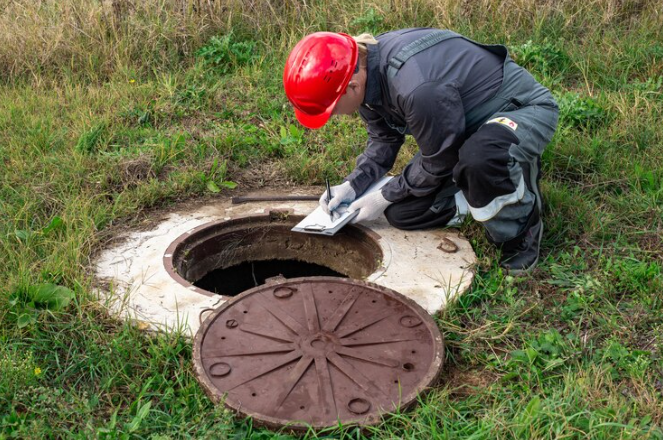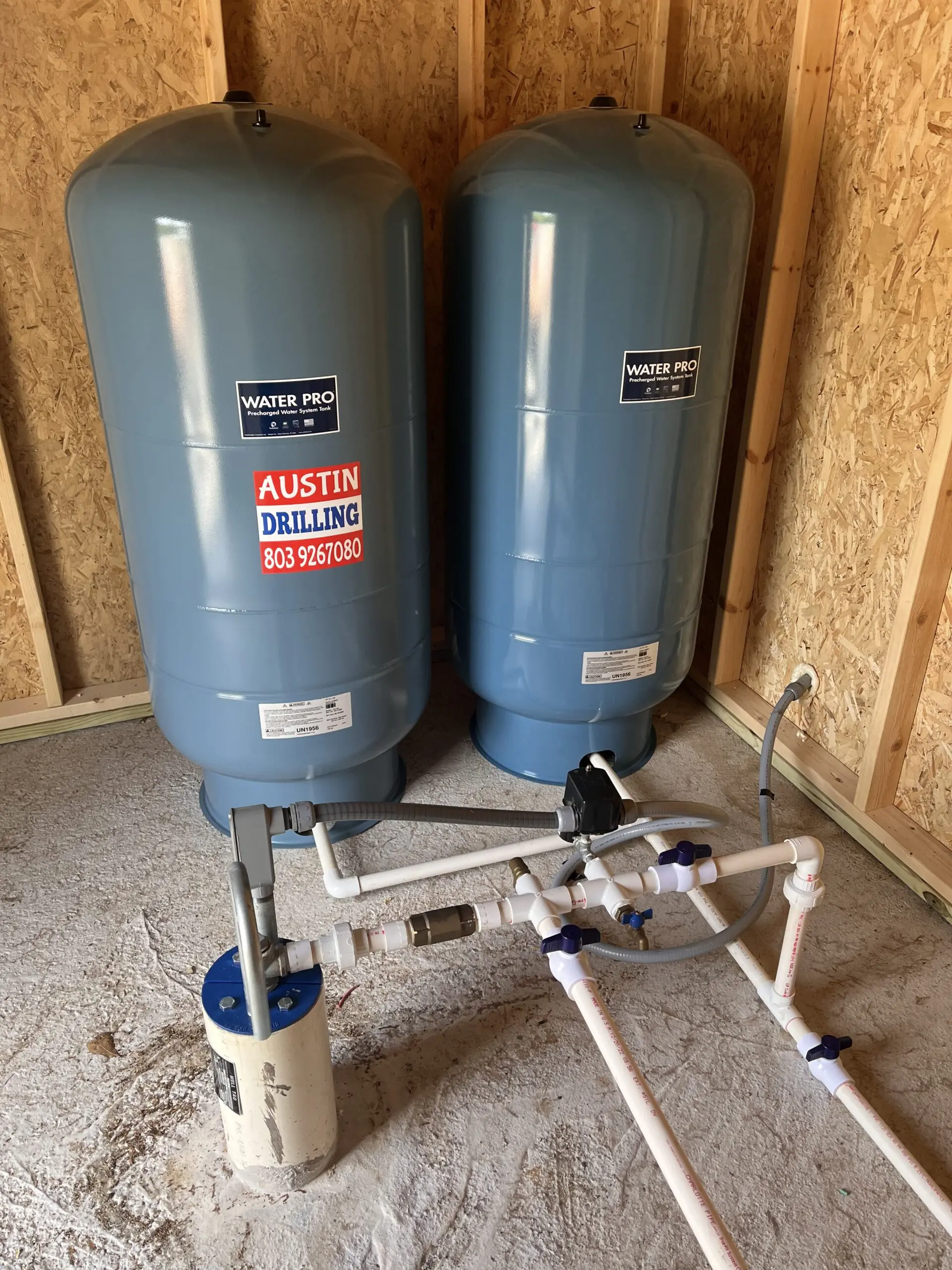
Water softeners remove minerals from hard water, mostly calcium and magnesium ions. Hard water’s high mineral content causes scale accumulation, soap scum, reduced soap, detergent lathering, and decreased appliance and plumbing efficiency.
Tanks for water softeners are often made of resin beads or zeolite crystals doused in sodium ions. The calcium and magnesium ions present in hard water are replaced by sodium ions on the resin beads through ion exchange. “Soft” water, with a lower mineral content, is what the water softener at Austin Drilling & Well Repair provides.
Water softeners operate in two main stages: regeneration and recharge. During regeneration, the resin beads are rinsed with a brine solution containing high sodium chloride or potassium chloride concentrations. This process removes the accumulated calcium and magnesium ions trapped in the resin beads, and substitutes sodium or potassium ions, restoring the softening capacity of the resin. The calcium and magnesium ions and the excess brine solution are flushed out of the system during the recharge stage.
Benefits Of Using A Water Softener
- Improved Skin and Hair Care
- Prevention of Scale Buildup
- Improved Efficiency of Appliances
- Enhanced Cleaning and Soap/Detergents Efficiency
- Longer Lifespan of Plumbing Systems
- Brighter and Softer Fabrics
- Reduced Need for Cleaning Products:
- Improved Skin and Hair Care
- Cost Savings
Water softeners may increase the sodium or potassium content of treated water for people on sodium-restricted diets or with certain health issues. Alternative water treatment methods, such as potassium chloride-based systems, may be studied.
Water softeners reduce the effects of hard water, improve water quality, and increase the performance and lifetime of water-based appliances and plumbing systems at Austin Drilling & Well Repair.
How Does it Work?
A water softener works through ion exchange to remove or reduce the concentration of minerals, primarily calcium and magnesium ions, from hard water. Here’s how a water softener typically operates:
Resin Tank: The water softener system consists of a resin tank that contains resin beads or zeolite crystals. These beads or crystals are made of polystyrene material with a negative charge.
Ion Exchange: When hard water enters the resin tank, it flows through the beads. With their negative charge, the resin beads attract and hold onto positively charged calcium and magnesium ions in the water through ion exchange. As a result, the resin beads capture the calcium and magnesium ions in the water, and the water is ionized with sodium or potassium, respectively.
Softened Water Output: The water that passes through the resin tank is now “soft” water, as most calcium and magnesium ions have been replaced with sodium or potassium ions. This softened water is then distributed for use throughout the plumbing system of the building.
Regeneration: Over time, the resin beads become saturated with calcium and magnesium ions and cannot soften water. To soften resin, the water softener goes through a regeneration process.
- Brine Solution: A brine solution is prepared in the system’s brine tank during regeneration. The brine solution is a highly concentrated sodium chloride or potassium chloride solution.
- Backwashing: The regeneration process typically begins with a backwash cycle, where water flows through the resin tank in the opposite direction to flush out debris or sediment.
- Brine Rinse: The brine solution is drawn into the resin tank—the sodium, potassium, calcium, and magnesium ions on the resin beads through ion exchange. The calcium and magnesium ions and other impurities are rinsed out of the system and discharged as wastewater.
- Brine Tank Refill: Once the regeneration process is complete, the brine tank is refilled with fresh water to prepare for the next regeneration cycle.
Automatic Operation: Water usage and regeneration schedules drive most water softeners. A control valve monitors water flow and starts regeneration as needed.
Water softeners need frequent maintenance, like adding salt or potassium chloride to the brine tank and maintaining the resin bed. Water hardness, system capacity, and usage affect regeneration and maintenance frequency.
By utilizing ion exchange, a water softener effectively removes calcium and magnesium ions from hard water, providing softened water that offers benefits such as reduced scale buildup, improved cleaning efficiency, and increased lifespan of appliances and plumbing systems at Austin Drilling & Well Repair.
What Does it Remove?
Water softeners are designed to remove or reduce the concentration of certain minerals, primarily calcium, and magnesium ions, from hard water. Here are the main substances that water softeners remove:
- Calcium (Ca2+): Water softeners effectively remove calcium ions responsible for forming limescale deposits. Limescale can accumulate on plumbing fixtures, pipes, appliances, and other surfaces, reducing water flow and decreasing efficiency.
- Magnesium (Mg2+): Water softeners also remove magnesium ions, another common mineral in hard water. Magnesium contributes to scale formation and can interfere with the effectiveness of cleaning agents.
- Iron (Fe2+ and Fe3+): Some water softeners, particularly those with specific iron removal capabilities, can remove low iron levels from water. Iron can cause staining, discoloration, and an unpleasant metallic taste in water.
- Manganese (Mn2+): Certain water softeners can also remove manganese ions from water. Manganese can cause similar issues as iron, including staining and an unpleasant taste.
- Other Metal Ions: Water softeners may have some limited ability to remove other metal ions present in water, such as copper, zinc, and lead. However, water softeners primarily focus on calcium and magnesium removal.
Water softeners cannot remove germs, viruses, chlorine, or other chemicals. Activated charcoal filters, UV disinfection, and reverse osmosis may be needed to remove these contaminants.
At Austin Drilling & Well Repair, water softeners remove hardness minerals to avoid scale accumulation, improve appliance performance, and improve water quality. Water softeners remove minerals based on their effectiveness in treating specific water conditions.
Advantages & Disadvantages
Advantages of Water Softeners
- Scale Prevention
- Improved Appliance Efficiency
- Extended Lifespan of Plumbing Systems
- Softer Skin and Hair
- Improved Cleaning Efficiency
Disadvantages of Water Softeners
- Sodium Content in Treated Water
- Need for Maintenance and Regeneration
- Increased Water and Salt Consumption
- Environmental Impact
- Upfront and Operational Costs
Considering these advantages and disadvantages is important when deciding whether a water softener suits your specific needs and circumstances. Alternative water treatment methods, such as conditioners, electronic descalers, or reverse osmosis systems, may be more appropriate.
At Austin, Drilling & Well Repair is here to help you make the right decision for your needs. With over a year of experience in water treatment, we have helped many customers achieve cleaner, softer, and better-tasting water.
Contact us today to learn more about our services and determine the best solution.
What Does Well Shocking Remove From Your Water?
Well shocking, also known as well disinfection or chlorination,
Water Well Inspection Checklist
Your Comprehensive Water Well Inspection Checklist: Ensuring a Safe




